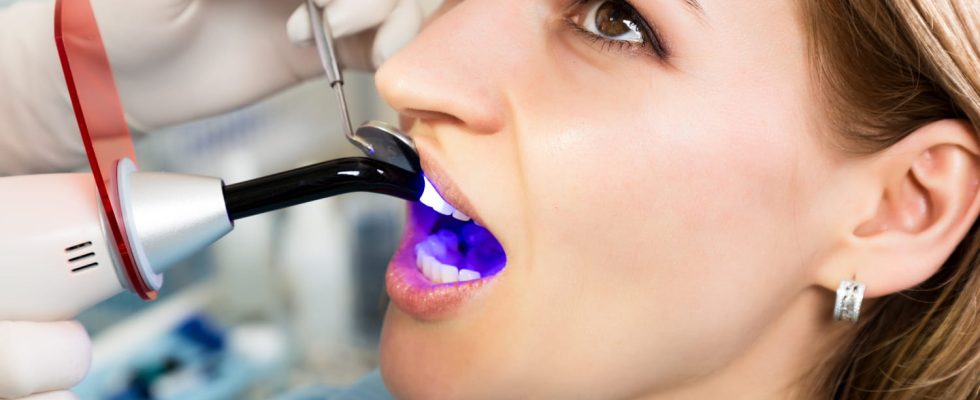Dental caries is a very common tooth infection, favored by a diet high in sugar or poor oral hygiene. Tips for recognizing and treating it quickly!
Caries is a very common dental disease that affects both adults than children. According to’World Health Organization, 60-90% of school children worldwide and nearly 100% of adults have at least one cavity in their lifetime. How to recognize dental caries? Does it hurt ? Who to consult and how to treat it?
What are the causes of a cavity?
A caries appears when the following three elements come together :
► The presence of particular bacteria that tend to make acid when they break down food. “Released by the bacteria, this acid stagnates on the surface of the tooth and dissolves the tooth until it creates a hole: what is called caries. If the cavity is left untreated, the hole enlarges and the cavity becomes deeper“, says Dr. Alain Vallory, dental surgeon and General Secretary of the Dental Surgeons of France.
► The presence of food debris (even microscopic), particularly the sugars that will feed these bacteria
► A tooth that lacks strength against this acid. “We don’t all have the same quality of teeth. The acid attack will be more or less slow depending on the dental quality“, continues our interlocutor.
photo of tooth decay
How to recognize a cavity? Is it still visible?
Caries forms a chalky (white then blackish-gray) or brown spot on the enamel. But “it is not always visible insofar as the cavity can be hidden on a side of the tooth that you cannot see, between the teeth for example“, answers our expert. From the moment the caries is on a visible side of the tooth, it is seen and initially takes the form ofa stain on the tooth. The enamel (the protective shell of the tooth) is gradually demineralized, it becomes more and more porous and rough. The food colorings will tend to stick to these rough parts.
What are the symptoms of a cavity?
In the absence of treatment, the caries progresses in phasesirreversibly:
- First phase: the cavity first forms a cavity on the enamel (the outer layer of the tooth) and we feel nothing.
- Then, when the cavity reaches dentin (under the enamel), we generally feel sensitivity to hot, cold, or acidic foods
- A cavity that reaches the dental pulp causes much more violent and acute pain
- If the dental pulp is infected, there is finally the formation ofa tooth abscesswith the characteristic sign of intense, throbbing pain.
► If the cavity is in the thickness of the enamel, the dentist will polish the surface in question (if the area is accessible) and fluoridate it so that the enamel there resists the acid and stops the decay process. Advice on hygiene, diet and brushing are also given.
► From the moment the enamel is perforated and the cavity invades the inside of the tooth, the dental surgeon will scratch inside the hole to remove bacteria and acid, then seal the cavity with a filling material.
What do you risk if you do not treat a cavity?
If we don’t treat cavities, the hole will continue to grow. Bacteria and acid progress more and more to the level of the pulp (set of blood vessels that nourish the tooth from the inside), which leads to pain. From a moment, the blood vessels become necrotic, the bacteria colonize the heart of the tooth, the hollow increases and more and more bacteria infect the inside of the tooth. “There are two consequences: on the one hand the tooth, which is nothing more than an empty shell, ends up being destroyed, on the other hand the infection degenerates at the level of the jaw and leads to an abscess. In the extreme and in the absence of treatment, this abscess could evolve into sepsis or lead to a risk of endocarditis. But the pain and the swelling of the cheek are such that people consult before reaching that point. Today in France, dying of a cavity is exceptional, if not non-existent.“, warns our expert.
dental hygiene and brushing quality remove food debris, reducing the risk of cavities. “Also, the acidity is buffered by the quality of the saliva. If you can’t brush your teeth after a meal, chew gum (obviously without sugars otherwise we feed the bacteria) causes salivation, accelerates the rise in pH and therefore reduces acidity more quickly“, he explains. Finally, fluoride improves the quality of teeth by making the enamel more resistant. This is why there is fluoride in most toothpastes.
Thanks to Dr Alain Vallory, dental surgeon and General Secretary of the Dental Surgeons of France.
